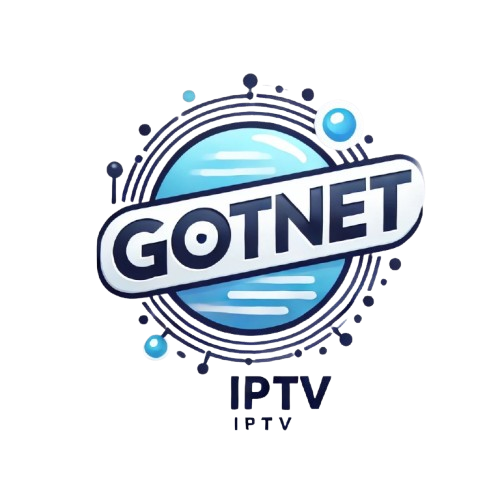GotNET
Understanding IPTV: A Comprehensive Guide to Internet TV
In the ever-evolving landscape of media consumption, Internet Protocol Television (IPTV) has emerged as a transformative force. Unlike traditional television services that rely on satellite or cable connections, IPTV utilizes internet protocols to deliver television content directly to viewers. This shift presents significant implications for how we consume our favorite shows, sports events, and films. In this comprehensive guide, we will explore the fundamentals of IPTV, the technology powering it, and the advantages and challenges that come with its adoption.
What is IPTV? An Overview of Internet Protocol Television
IPTV, or Internet Protocol Television, refers to the delivery of television content over internet connections instead of through conventional terrestrial, satellite, or cable formats. By using internet protocols, IPTV allows users to stream media in real-time, making it an appealing option for viewers worldwide. This form of technology enables the delivery of a wide array of services, including live television, video-on-demand (VOD), and time-shifted television, among others, which contributes to its growing popularity.
As a digital service, IPTV requires an internet connection with sufficient bandwidth to ensure smooth streaming. Users typically access IPTV content through set-top boxes, smart TVs, or compatible devices such as smartphones and tablets. The content can include not only standard television channels but also interactive features, allowing viewers to engage with the programming in ways traditional television cannot offer. This interactivity can analyze viewer preferences, thus personalizing the content delivery.
With the increasing prevalence of high-speed internet availability globally, IPTV has gained traction among consumers seeking alternatives to traditional cable packages. Its flexibility and customizable nature cater to a diverse audience, empowering them to curate their viewing experience. As more internet service providers and independent companies enter the IPTV market, the competition is further driving innovation and expanding the available options for consumers.
How IPTV Works: Key Technologies Behind Internet TV
At the heart of IPTV technology lies the Internet Protocol (IP), which facilitates the transmission of data packets over the internet. This protocol enables efficient data management, allowing IPTV systems to deliver streams securely and reliably. IPTV typically operates on a multicast network infrastructure, which means that data is sent from a server to multiple users simultaneously. This is highly efficient as it reduces the bandwidth needed for each viewer, allowing for a smoother experience.
IPTV platforms utilize various codecs to compress video and audio data, which optimizes streaming capabilities. Common codecs include H.264, H.265, and MPEG-4, which reduce file sizes without compromising quality. The data is then transmitted over the internet, where it can be decoded by various devices. Additionally, adaptive bitrate streaming technology allows IPTV services to adjust the quality of the stream in real-time, based on the viewer’s internet speed, providing a seamless viewing experience.
Furthermore, the integration of cloud computing with IPTV services allows for the storage and retrieval of vast amounts of content, enhancing the on-demand viewing experience. Features such as Electronic Program Guides (EPGs) provide users with a user-friendly interface to browse available content and schedule recordings. As technology continues to advance, the potential for IPTV grows, paving the way for innovations that can further enrich the viewer experience.
Benefits and Challenges of Using IPTV Services Today
The primary advantage of IPTV services is the flexibility they offer. Viewers can access a vast array of content at their convenience, often from multiple devices. This versatility allows for enhanced viewing experiences, as users can choose when and where to watch their favorite shows. Moreover, IPTV services frequently come with customizable channel packages, enabling consumers to tailor their subscriptions according to their preferences without having to pay for unnecessary channels.
Another significant benefit is the cost-effectiveness of IPTV compared to traditional cable services. Many IPTV providers offer competitive pricing with no long-term contracts, making it easier for consumers to switch providers or discontinue services when desired. Additionally, IPTV platforms often include features such as video-on-demand libraries, catch-up services, and the ability to record live television, providing viewers with more value for their money.
However, IPTV is not without its challenges. The quality of service is heavily dependent on internet speed and stability; slow or unreliable connections can lead to buffering, decreased video quality, or interruptions. Furthermore, the legal landscape surrounding IPTV can be complex, with many providers operating in grey areas of copyright and licensing. Users must exercise caution when selecting IPTV services, ensuring they choose legitimate providers to avoid potential legal repercussions.
In conclusion, IPTV represents a significant evolution in how we consume television content. By understanding the principles behind IPTV technology, its benefits, and the challenges faced by users, consumers can make informed decisions about their media consumption. As the demand for flexible and diverse viewing options continues to grow, IPTV is poised to play an increasingly vital role in the entertainment industry. With advancements in technology and broader internet accessibility, the future of IPTV looks promising, making it an essential consideration for any modern viewer.
